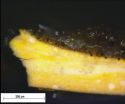(Press-News.org) BOSTON – February 14, 2011 – Once people develop type 2 diabetes, high blood glucose levels alter their metabolism so much that it becomes difficult to sift through all the clues to find what might enable the disease. "To identify factors that play a primary role in disease susceptibility, we want to investigate people before they get to that point," says Mary-Elizabeth Patti, M.D. of Joslin Diabetes Center. By examining people across the spectrum of diabetes—from healthy to the full-blown disease—scientists in her lab have found a molecular pathway that offers novel targets for drugs.
People develop type 2 diabetes over time as their bodies become more and more resistant to the hormone insulin, which is necessary to process the glucose in blood that provides energy for cells, explains Dr. Patti, who is also an Assistant Professor at Harvard Medical School.
In research reported online in the Journal of Clinical Investigation on February 14, Joslin clinical researchers, led by Dr. Allison Goldfine, took tiny samples of muscles from three categories of people: some who were healthy, some with a family history of diabetes who showed signs of insulin resistance although their blood glucose levels were normal, and some with full-blown type 2 diabetes.
They found that among the latter two groups, a gene known as STARS was expressed more than twice as much as in healthy people. STARS activates another gene known as SRF, and a group of genes regulated by SRF along with a co-activator protein called MKL1 showed the most increase in expression in the cells of those with type 2 diabetes. When scientists cultivated those cells in vitro, the same results appeared.
Examining the muscles of insulin-resistant mice, the scientists found similar boost in the expression of those key genes.
But was this molecular pathway helping to trigger insulin resistance or just showing up at the scene of the crime?
To find out, the scientists next took muscle cells derived from rodents, reduced the expression of STARS and found that glucose uptake climbed in the cells. They then examined the effect of a chemical that inhibits SRF and found that glucose uptake rates increased in both mice and human cells—and that the effects were greater in cells from patients who were insulin resistant or had type 2 diabetes. Finally, the investigators showed that giving the chemical inhibitor to mice with high glucose levels also boosted glucose uptake in muscles.
"This pathway holds promise as a target for novel diabetes therapies, and it also gives us tools to understand the pathways of progression to diabetes," concludes Dr. Patti.
###
Joslin's Wanzhu Jin was lead author on the paper. Co-authors included Allison Goldfine, Tanner Boes, Eun-Young Kim, Merve Emecan, Connor Fitzpatrick, Anish Sen, Ankit Shah, Martha Vokes, Joshua Schroeder, Elizabeth Tatro, and Jose Jimenez-Chillaron of Joslin; Theodore P. Ciaraldi and Robert R. Henry of the Veterans Administration San Diego Healthcare System and University of California/San Diego; and Edward Mun of Brigham and Women's Hospital. Lead funders were the National Institutes of Health and the Graetz Fund.
About Joslin Diabetes Center
Joslin Diabetes Center is the world's preeminent diabetes research and clinical care organization. Founded in 1898 by Elliott P. Joslin, M.D., Joslin is an independent, nonprofit institution affiliated with Harvard Medical School. For more information about Joslin, visit www.joslin.org. Keep up with Joslin on Facebook at www.facebook.com/joslindiabetescenter and follow on Twitter at twitter.com/JoslinDiabetes.
People at risk of diabetes offer clues toward novel drugs
Joslin Diabetes Center researchers pinpoint molecular pathway activated years before people develop type 2 diabetes
2011-02-15
ELSE PRESS RELEASES FROM THIS DATE:
New anti-clotting drug added to recommendations for treating irregular heartbeat
2011-02-15
The newly approved drug dabigatran is an alternative to warfarin to help prevent dangerous blood clots in patients with atrial fibrillation, according to updated guidelines from the American College of Cardiology, American Heart Association and the Heart Rhythm Society.
The "Focused Update" — published in Circulation: Journal of the American Heart Association, Journal of the American College of Cardiology and HeartRhythm Journal — specifically updates the section on emerging antithrombotic agents in atrial fibrillation treatment guidelines released by the three organizations ...
A hunk of a target for treating breast cancer
2011-02-15
Among women with breast cancer, approximately 25% have a subtype that is characterized by high levels of expression of the protein HER2. HER2-positive breast cancer tends to be more aggressive than other breast cancer subtypes. Increased molecular understanding of why HER2-positive breast cancer is so aggressive could aid in the development of new therapeutics. By studying mouse models, a team of researchers, led by Lewis Chodosh, at the University of Pennsylvania School of Medicine, Philadelphia, has now identified a key role for the protein Hunk in the formation of tumors ...
New combination therapy for solid tumors?
2011-02-15
Most, if not all, solid tumors contain regions that are not well oxygenated. Tumor cells in these regions, which are known as hypoxic regions, are usually resistant to the death-inducing effects of chemotherapeutics. But now, Caroline Dive and colleagues, at Manchester University, United Kingdom, have identified a compound (ABT-737) that induces human cancer cells exposed to hypoxic conditions in vitro to undergo a form of cell death known as apoptosis. In addition, cells in hypoxic regions of human tumors xenografted in mice were susceptible to ABT-737–induced apoptotic ...
JCI online early table of contents: Feb. 14, 2011
2011-02-15
EDITOR'S PICK: A hunk of a target for treating breast cancer
Among women with breast cancer, approximately 25% have a subtype that is characterized by high levels of expression of the protein HER2. HER2-positive breast cancer tends to be more aggressive than other breast cancer subtypes. Increased molecular understanding of why HER2-positive breast cancer is so aggressive could aid in the development of new therapeutics. By studying mouse models, a team of researchers, led by Lewis Chodosh, at the University of Pennsylvania School of Medicine, Philadelphia, has now identified ...
X-rays show why van Gogh paintings lose their shine
2011-02-15
This release is available in French.
VIDEO:
A microsample is taken from the van Gogh painting "Bank of river Seine " on display at the van Gogh Museum in Amsterdam (Netherlands), and then analyzed at the X-rays microscope...
Click here for more information.
Scientists have identified a complex chemical reaction responsible for the degradation of two paintings by Vincent ...
Medicare costs in last 6 months of life driven by patient variables twice as much as geography
2011-02-15
A study by Mount Sinai School of Medicine finds that Medicare costs at the end of life are influenced more by patient characteristics, such as ability to function, the severity of the illness, and family support than by regional factors, such as the number of hospital beds available. The study will be published February 15 in The Annals of Internal Medicine.
"These new findings show that the reasons for wide variation in Medicare costs across the United States are much more complicated than previously thought," said lead author Amy Kelley, MD, Assistant Professor in ...
UC San Diego biologists gain new insights into brain circuit wiring
2011-02-15
Neurobiologists at UC San Diego have discovered new ways by which nerves are guided to grow in highly directed ways to wire the brain during embryonic development.
Their finding, detailed in a paper in the February 15 issue of the journal Developmental Cell, provides a critical piece of understanding to the longstanding puzzle of how the human brain wires itself into the complex networks that underlie our behavior.
The discovery concerns the movements of a highly sensitive and motile structure at the tips of growing nerves called a growth cone. For more than a century, ...
Less is more when prescribing acid suppressive drugs for non-ICU patients
2011-02-15
BOSTON – Over the last several decades, the prophylactic use of acid-suppressive medications to help prevent gastrointestinal bleeding (GI) in hospitalized patients has increased significantly, with some studies estimating that as many as 40 to 70 percent of all medical inpatients are given these drugs at some point during their hospitalization.
But, for patients who are not critically ill, the actual incidence of GI bleeding has not been well investigated.
Now, a study led by researchers at Beth Israel Deaconess Medical Center (BIDMC) and reported in today's on-line ...
Living fast but dying older is possible -- if you're a sheep
2011-02-15
According to Dr Annette Baudisch of the Max Planck Institute for Demographic Research in Rostock, Germany, current methods of comparing patterns of ageing are limited because they confound two different elements of ageing – pace and shape.
"Some organisms live a short time, others live a long time. This is the pace of ageing. Short-lived species have a fast pace of ageing, and long-lived species have a slow pace of ageing. Pace describes how quickly the clock of life ticks away. For humans it ticks slowly, for small songbirds like the robin it ticks very fast," explains ...
Lavender oil has potent antifungal effect
2011-02-15
Lavender oil could be used to combat the increasing incidence of antifungal-resistant infections, according to a study published in the Journal of Medical Microbiology. The essential oil shows a potent antifungal effect against strains of fungi responsible for common skin and nail infections.
Scientists from the University of Coimbra in Portugal distilled lavender oil from the Lavandula viridis L'Hér shrub that grows in southern Portugal. The oil was tested against a range of pathogenic fungi and was found to be lethal to a range of skin-pathogenic strains, known as dermatophytes, ...
LAST 30 PRESS RELEASES:
SIMJ announces global collaborative book project in commemoration of its 75th anniversary
Air pollution exposure and birth weight
Obstructive sleep apnea risk and mental health conditions among older adults
How talking slows eye movements behind the wheel
The Ceramic Society of Japan’s Oxoate Ceramics Research Association launches new international book project
Heart-brain connection: international study reveals the role of the vagus nerve in keeping the heart young
Researchers identify Rb1 as a predictive biomarker for a new therapeutic strategy in some breast cancers
Survey reveals ethical gaps slowing AI adoption in pediatric surgery
Stimulant ADHD medications work differently than thought
AI overestimates how smart people are, according to HSE economists
HSE researchers create genome-wide map of quadruplexes
Scientists boost cell "powerhouses" to burn more calories
Automatic label checking: The missing step in making reliable medical AI
Low daily alcohol intake linked to 50% heightened mouth cancer risk in India
American Meteorological Society announces Rick Spinrad as 2026 President-Elect
Biomass-based carbon capture spotlighted in newly released global climate webinar recording
Illuminating invisible nano pollutants: advanced bioimaging tracks the full journey of emerging nanoscale contaminants in living systems
How does age affect recovery from spinal cord injury?
Novel AI tool offers prognosis for patients with head and neck cancer
Fathers’ microplastic exposure tied to their children’s metabolic problems
Research validates laboratory model for studying high-grade serous ovarian cancer
SIR 2026 delivers transformative breakthroughs in minimally invasive medicine to improve patient care
Stem Cell Reports most downloaded papers of 2025 highlight the breadth and impact of stem cell research
Oxford-led study estimates NHS spends around 3% of its primary and secondary care budget on the health impacts of heat and cold in England
A researcher’s long quest leads to a smart composite breakthrough
Urban wild bees act as “microbial sensors” of city health.
New study finds where you live affects recovery after a hip fracture
Forecasting the impact of fully automated vehicle adoption on US road traffic injuries
Alcohol-related hospitalizations from 2016 to 2022
Semaglutide and hospitalizations in patients with obesity and established cardiovascular disease
[Press-News.org] People at risk of diabetes offer clues toward novel drugsJoslin Diabetes Center researchers pinpoint molecular pathway activated years before people develop type 2 diabetes

